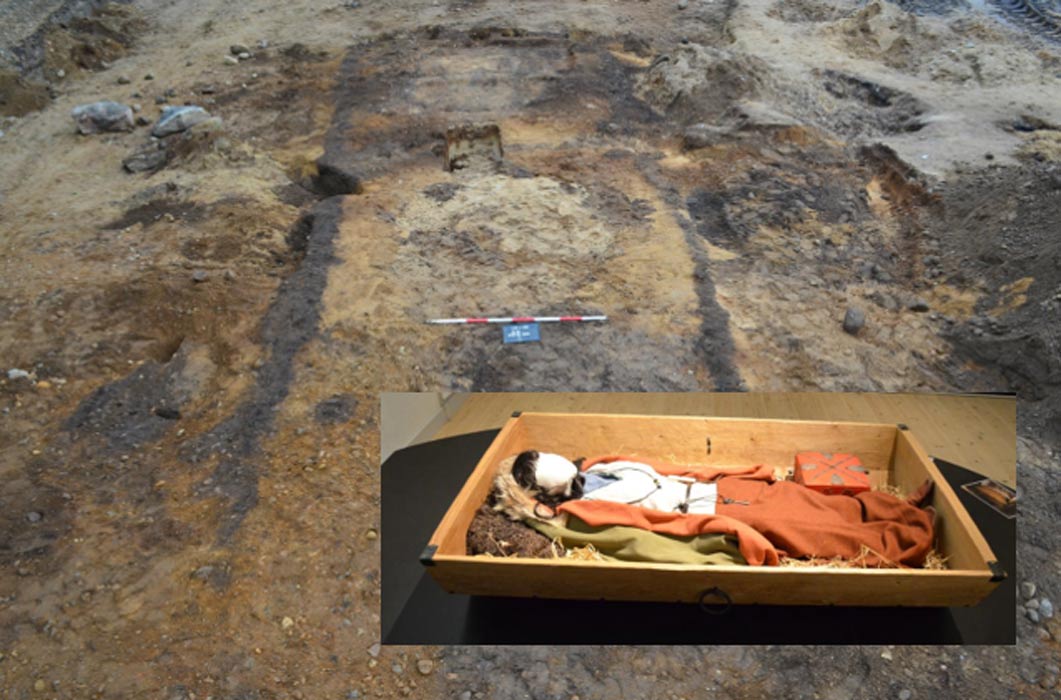A grave found in Late Viking Age eastern Norway looks uncannily similar to one of the most immaculate graves from the Roman Age in Norway, from the Hunn burial site in Ostfold. A rich burial site, it possesses 145 visible burial mounds from a two-thousand-year historical span. This large site dates from sometime around the Late Bronze Age to the end of the Viking Age, roughly 1100 BC to 1050 AD.

The site has been the subject of multiple studies by Julie Lund, an Associate Professor at the Department of Archaeology, Conservation and History at the University of Oslo. The project titled “Using the Past in the Past. Viking Age Scandinavia as a Renaissance?”, has had two research papers published, with the latest published this April for Archaeological Dialogues , building upon previous work from the Cambridge Archaeological Journal . The key takeaway? Different groups in the Viking Age used distinctive references to relate to a larger shared past.
Near and Distant Pasts – A Distinguishing Factor
“The Vikings made use of the past in a more subtle way than previously believed. For example, they distinguished between a near and a distant past. This can be seen in female graves where heirlooms such as jewelry have been laid down, while in other graves, such as Store Vikingegrav, items have been included that copy objects dating back to the Roman period 700 years earlier,” says Lund.
She further explained that Hunn is a special burial site because of the representation of almost all periods of prehistory. Continuous usage and occupation for thousands of years has contributed to many layers of history. What is particularly surprising is how and why the Vikings chose to occupy the singularly most spectacular Roman-era grave in the landscape.

According to Lund, it is a deliberate decision to create a sort of continuum with a Roman-era past. In general, historical terms, these kinds of allusions of reuse around monuments, buildings, and graves have referred to some kind of symbolism related to power. Lund’s analysis hopes to move away from that and provide a different kind of model.
“Distinguishing between near and distant pasts is probably not something that we regard as being particularly special. However, what we can see is that they made connections with a specific part of the past at a time when they did not have much of an idea about the past,” she explained.

Looking at the Sites – Similarities and DifferencesAccording to a press release by the University of Oslo , the area has three sites – the Western site (graves dating to the Roman times), the Migration period, the Iron Age and the Viking Age. What caught the attention of Lund and fellow researchers were two graves in particular – built hundreds of years apart from each other. The Roman grave has been named Stubhoj, and the similar grave from the Viking Age is called Store Vikingegrav, which translates to the ‘Large Viking Grave’.
Assessing the similarities between both graves, one thing that stood out was that both graves occupied the best parts of the site. The Roman grave lay on top of a ridge while the Vikings was built on a slope of the same ridge.
Both graves are marked by kerbstones that encircle the graves and are even stoned. The burial mounds thus acquired an ‘older’ look, while also acting as a replica of sorts, allowing a certain kind of ‘timelessness’ to creep in.
Even the insides were copied – both graves possess weapons, shields, rare drinking horns, riding spurs and have furnished burial chambers. This interior similarity is still a cause for some confusion – after all, the Roman grave hadn’t been opened till the 1900s, almost 900 years after the Vikings made theirs’!
Departure and Continuum: Vikings and Romans
“Stubhoj is the first inhumation grave that we know of today. Between the Bronze Age and the date of this Roman Age grave they used to burn their dead. So, this is a departure from a thousand-year-old tradition of cremation,” explained Lund.
The probable explanation is that through word of mouth and oral traditions, the Vikings replicated what they’d heard and were thus able to create these graves. Stories of the Roman burials , the grandeur, the gifts, the alliances created through this important ritual of death were all preserved through memory. It is also perhaps a way of choosing how to be remembered for the Vikings, who are reinterpreting important tradition, and thereby creating a certain perception.
“When you use elements from the past, you make it exist or relevant in the present. This is how material culture affects people and vice versa. Using the past and copying a Roman-era grave indicates that they were not just trying to create something that looked old. The past also provided them with a narrative about who they were. Consequently, the Vikings’ use of the past concerned social relationships, self-awareness and identity,” she concludes.





